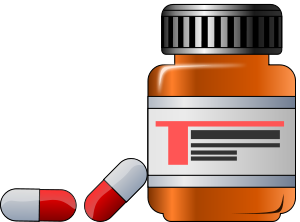This is a busy time for most practices. Managers are preparing for the annual juggling act of getting staff and physicians coordinated for summer vacations. Practices are ramping up for new doctors joining their practice at the traditional end of residency programs in the summer. Many practices are in the midst of shopping for, negotiating for or implementing EMRs. And most everyone without an existing EMR is struggling with the e-prescribing deadline looming in 30 days. Read my first post on this topic here.
As a reminder:
- Eligible professionals who are not successful e-prescribers, based on claims submitted between January 1, 2011 and June 30, 2011, may be subject to a “payment adjustment” (read payment cut) in their Medicare Part B Physician Fee Schedule (PFS) for covered professional services in 2012.
- Those that do not e-prescribe as a part of 10 Medicare patient encounters by June 30, 2011 will only receive 99% of their Medicare payment for all encounters in 2012.
- Those that do not e-prescribe as a part of 25 encounters by December 31, 2011, will only receive 98.5% of their Medicare payments for all encounters in 2013 and only 98% of their Medicare payments for encounters during 2014 and going forward.
Here are the problems practices have encountered trying to get their ten:
- Physicians seeing patients in facilities and using the codes that are eligible for eRx, but not having the ability to e-prescribe during the visit
- Physicians in specialties not prescribing many medications
- Physicians in specialties prescribing predominantly controlled drugs, which are not currently eligible for electronic prescribing
Today, the AMA released this announcement
May 31, 2011
On May 26 the Center for Medicare and Medicaid Services (CMS) responded to AMA concerns about the e-prescribing penalty program and issued a proposed rule that makes significant changes to it by adding more exemption categories. These changes will assure that physicians are not unfairly penalized for failing to meet the requirements under the 2012 e-prescribing penalty program.
Physicians are still required to e-prescribe using a qualifying e-prescribing system and report the G8553 code on at least 10 Medicare Part B claims from Jan. 1, 2011, through June 30, 2011, to avoid the 2012 e-prescribing penalty.
However, to avoid the 2012 e-prescribing penalty, physicians now will have an opportunity to attest through an on-line web portal that they are eligible for one of the following penalty exemptions:
- Physician’s practice is located in a rural area without high speed internet access
- Physician’s practice is located in an area without sufficient available pharmacies for electronic prescribing
- Physician is registered to participate in the Medicare or Medicaid EHR Incentive Program and has adopted certified EHR technology (New)
- Physician is unable to electronically prescribe due to local, State, or Federal law or Regulation (e.g., prescribes controlled substances) (New)
- Physician infrequently prescribes (e.g., prescribe fewer than 10 prescriptions between January 1, 2011 –June 30, 2011) (New)
- There are insufficient opportunities to report the e-prescribing measure due to program limitations (e.g., surgeons) (New)
Physicians will have to apply for an exemption from the 2012 e-prescribing penalty via the web-portal tool by Oct. 1.
What if you don’t fall into one of these new categories?
It’s time to tap into one of the free electronic prescribing packages available. Here are two choices:
- The National ePrescribing Patient Safety Initiative (NEPSI) – Free, Allscripts Software
- Practice Fusion – Free, probably will have advertising and your data will be mined (all 10 prescriptions!) but you may be able to get it up and running very quickly
Some other thoughts on getting your ten done
- Prescribe over-the-counter drugs including stool softeners and anti-emetics.
- Prescribe Tylenol3 or another non-controlled pain reliever – patients do not need to pick these prescriptions up or pay for them.
- Ask your Medicare patients if they have any prescriptions they would like you to refill while they are in the office. Over-the-phone refills do not count as there is no associated face-to-face service.



